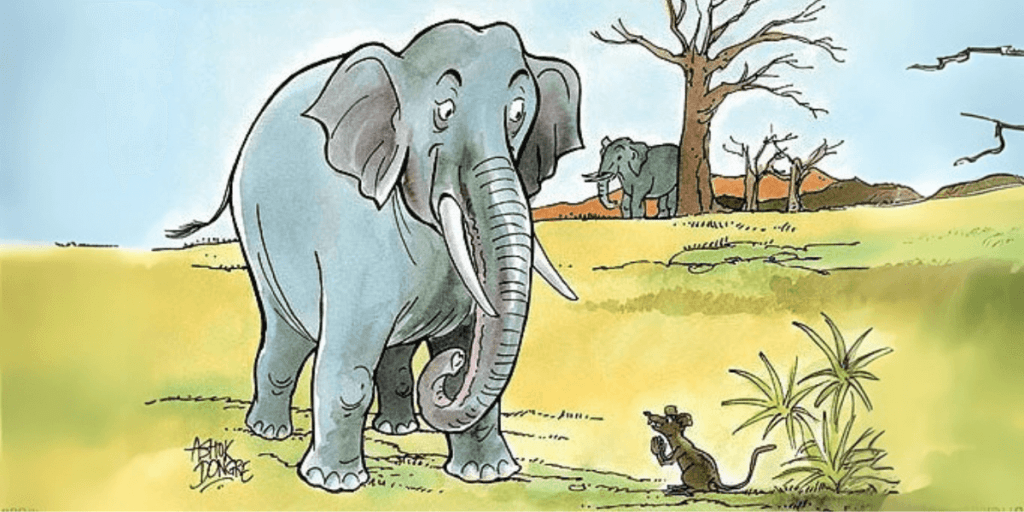One of the most important things our thinking mind does is try to make sense of the world by building a personal map of what feels “normal.” It’s not something we actively sit down and create — it forms on its own, quietly, over time. Through everyday experiences, our brain picks up on patterns: when certain events, actions, or outcomes happen together — whether at the same time or close in sequence — it starts linking them. Even if the connection doesn’t make perfect logical sense, the repetition alone is often enough for the brain to say, “Okay, this usually happens, so I’ll expect it again.”
Those links begin to form the foundation of what we see as familiar. And the more often something happens, the more “normal” it feels. These patterns don’t just shape how we interpret what’s going on around us — they shape what we assume will happen next. When something fits neatly into those mental patterns, it goes by unnoticed. But when something disrupts them — when reality doesn’t line up with the story we’ve come to expect — that’s when we feel surprise.
So really, understanding normality and surprise gives us a window into how our minds work: how we learn from experience, how we form expectations, and how even the smallest shift in a pattern can change the way we understand the moment we’re in.
Surprise Is Built on Expectations
A big part of our mental life involves managing expectations. And surprise is one of the clearest signs of what we believe is “supposed to” happen. There are many different kinds of surprises, but one major type occurs when we expect something to happen — and it doesn’t.
For example, if I know that my partner usually comes home at 6 p.m., I’m not surprised when I hear the door open at that time. That’s normal. But if it’s 6:30 and there’s no sign of him, that starts to feel unusual. The surprise isn’t in what happened — it’s in what didn’t happen.
Recently, it was my birthday. I wasn’t surprised when my boyfriend didn’t bring me flowers, because that’s not something he usually does. But what did surprise me was that my old neighbour — someone I haven’t spoken to in six years — did send me flowers. That was unexpected. If she does it again next year, I won’t be as surprised, because now my mind has linked her to that act. I’ll still feel happy and touched, but the action will no longer surprise me.
That’s how surprise and normality work. We don’t always expect good things or bad things — we expect what has happened before. The more something repeats, the more “normal” it becomes in our minds.
A Childhood Example of Accidental Pattern-Making
Here’s a funny memory from when I was a kid. I used to get off the school bus and walk home, and I had to climb over a small hill (in Estonian, that’s called a küngas). For some reason, every time I reached the top, I really needed to pee. There was no real connection between the hill and my bladder, of course — it was just a coincidence.
But because that need-to-pee feeling happened a few times in a row, my brain created a link. Even now, years later, I still expect that feeling when I walk over the same hill. That’s what our brain does: it tries to find patterns, even where none exist, and it uses those patterns to build predictions. This is a great example of understanding normality and surprise — even meaningless connections can start to feel like rules.
How One Event Can Shift the Whole Context
The psychologists Dale Miller and Kahnemann wrote about how people decide what’s “normal” and what’s “strange.” Here’s an example that shows how quickly our sense of normality can shift.
Imagine you’re at a trendy restaurant. You’re not paying close attention, but you notice someone at the next table try the soup and suddenly wince — like they’re in pain. That one moment changes the entire atmosphere.
Now, if a waiter accidentally touches that person and they jump, it doesn’t feel strange anymore. If someone else tries the same soup and reacts negatively, it fits the new pattern. You weren’t expecting those things before, but now they seem “normal” because your brain has linked them to the original reaction.
This doesn’t happen because you predicted it ahead of time. It happens because your mind pulls the first surprise into memory and uses it to explain the new ones. Suddenly, a whole series of things make sense together: the person might be especially sensitive, or maybe the soup is just really bad.
When Surprise Creates a New Story
That’s the key to understanding normality and surprise: our minds don’t just register what happens — they build stories out of it. If someone sends the soup back after the first guest’s painful reaction, your brain might now shift to blaming the soup itself, not the person’s sensitivity.
This happens in everyday situations all the time. One moment doesn’t just exist on its own — it becomes the first piece in a new pattern, and everything after it is interpreted through that lens.
The “Moses Illusion” — When Things Feel Normal But Aren’t
Here’s a classic example of how our brains let incorrect things slide when they sound close enough to being right:
“How many animals of each kind did Moses take on the ark?”
The answer, of course, is none. It was Noah, not Moses. But most people don’t even notice the mistake. That’s because the sentence activates a “biblical” context in the mind, and Moses feels like he belongs there — even though he’s the wrong guy.
This is another example of understanding normality and surprise. Because Moses and Noah have similar names and exist in the same general mental category, your brain doesn’t flag it as wrong.
Now, if the question were, “How many animals did George W. Bush take on the ark?” — you’d instantly notice something was off. That sentence breaks the pattern too far, and the illusion doesn’t work.

When Something Feels Off — and Your Brain Catches It Instantly
Sometimes, surprise shows up in more subtle ways — even in just one word. Take this sentence:
“Earth revolves around the trouble every year.”
Right away, you know something’s wrong. “Trouble” doesn’t fit. Your brain doesn’t even need a second to detect that. It happens automatically — fast and below the surface.
Even more fascinating, this effect shows up in voice and context too. If a man says, “I think I’m pregnant,” or a very upper-class voice says, “I have a large tattoo on my back,” your brain reacts the same way. It catches that mismatch, even if you weren’t consciously expecting anything specific.
That’s because your mind is using tons of background knowledge to detect what “fits” and what doesn’t — and it does this in under 0.2 seconds. That’s what makes understanding normality and surprise so powerful: it’s automatic, fast, and deeply connected to what we know about the world.
Why Shared Norms Make Communication Possible
We’re able to communicate with each other because we share a lot of the same basic understandings about the world. If I say “table,” you don’t picture a table with 25 legs or one that’s hanging from the ceiling. You picture a flat surface with four legs — because that’s the “normal” version of a table in our shared experience.
That’s why we can detect anomalies so easily. We have mental norms for almost everything — not just objects, but behaviours, sizes, voices, and even emotions.
Let’s test it. Try this sentence:
“The large mouse climbed over the trunk of the very small elephant.”
Even though that’s technically possible, you probably imagined a small mouse and a huge elephant. Why? Because your mental categories for “mouse” and “elephant” come with built-in expectations — like size. So even if the sentence is meant to flip that around, you still picture the typical version. This shows how understanding normality plays a role in even the most basic language processing. Our brains expect the world to make sense, and when it doesn’t, we notice — fast.
So, in the end, our sense of what’s “normal” isn’t something fixed or logical — it’s something we build over time, quietly, based on the patterns we notice and the stories we tell ourselves. And surprise isn’t just about shock or novelty — it’s actually a window into how we understand the world and what we’ve come to expect from it.
The smallest experiences can leave a mark, shaping how we respond to people, places, and even little hills we walked over as kids. And while we might think we’re just reacting to the moment, our brains are always working behind the scenes — matching things up, comparing them to past patterns, and deciding if something makes sense or not.
I think there’s something kind of beautiful about that. We’re constantly building meaning, even in quiet moments. And sometimes, surprise is just our mind’s way of gently nudging us, saying, “Hey… something is different here.”
Next week, we’ll look at how we start to see causes and intentions behind the things people do — and how that affects the stories we tell ourselves about why things happen.
PS! I’m not a psychologist—just someone who’s obsessed with understanding how we think, feel, and grow.




